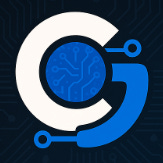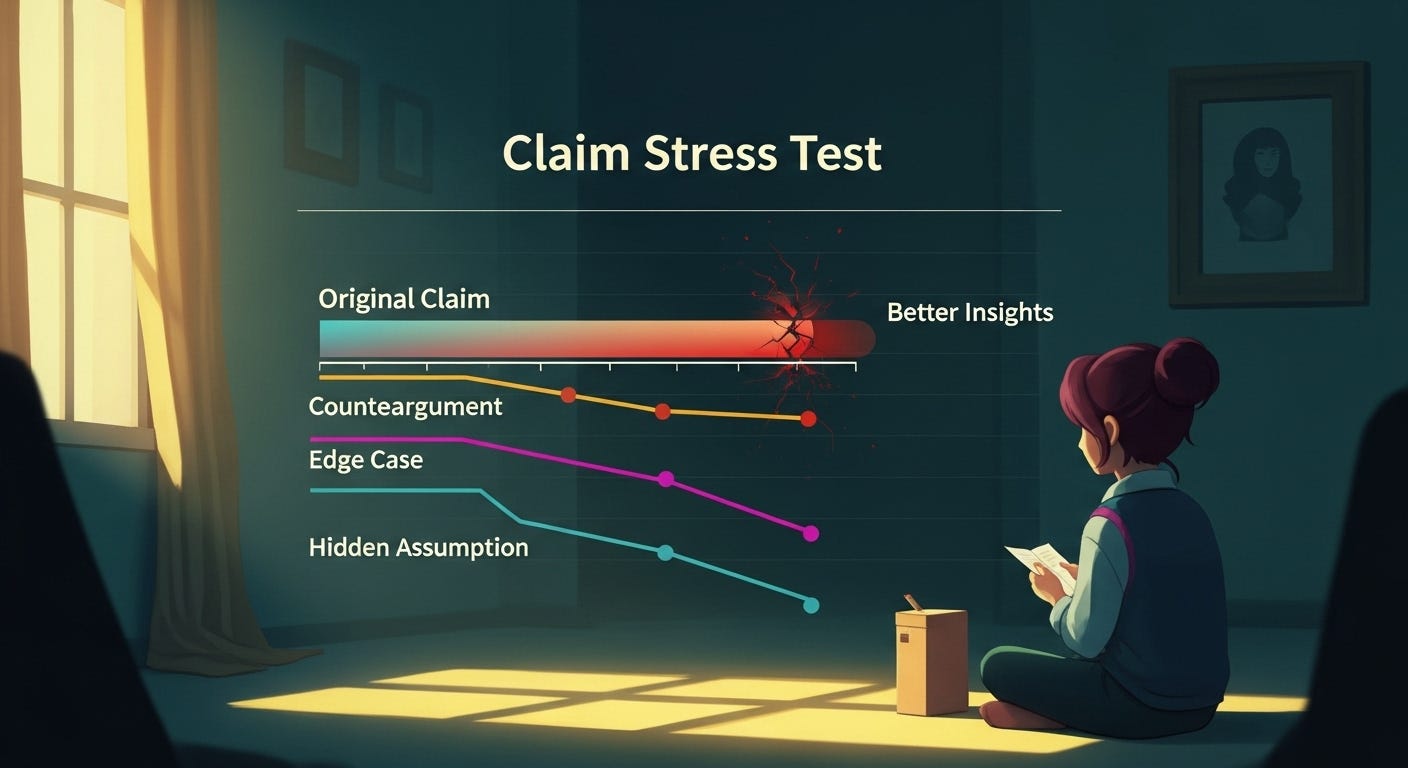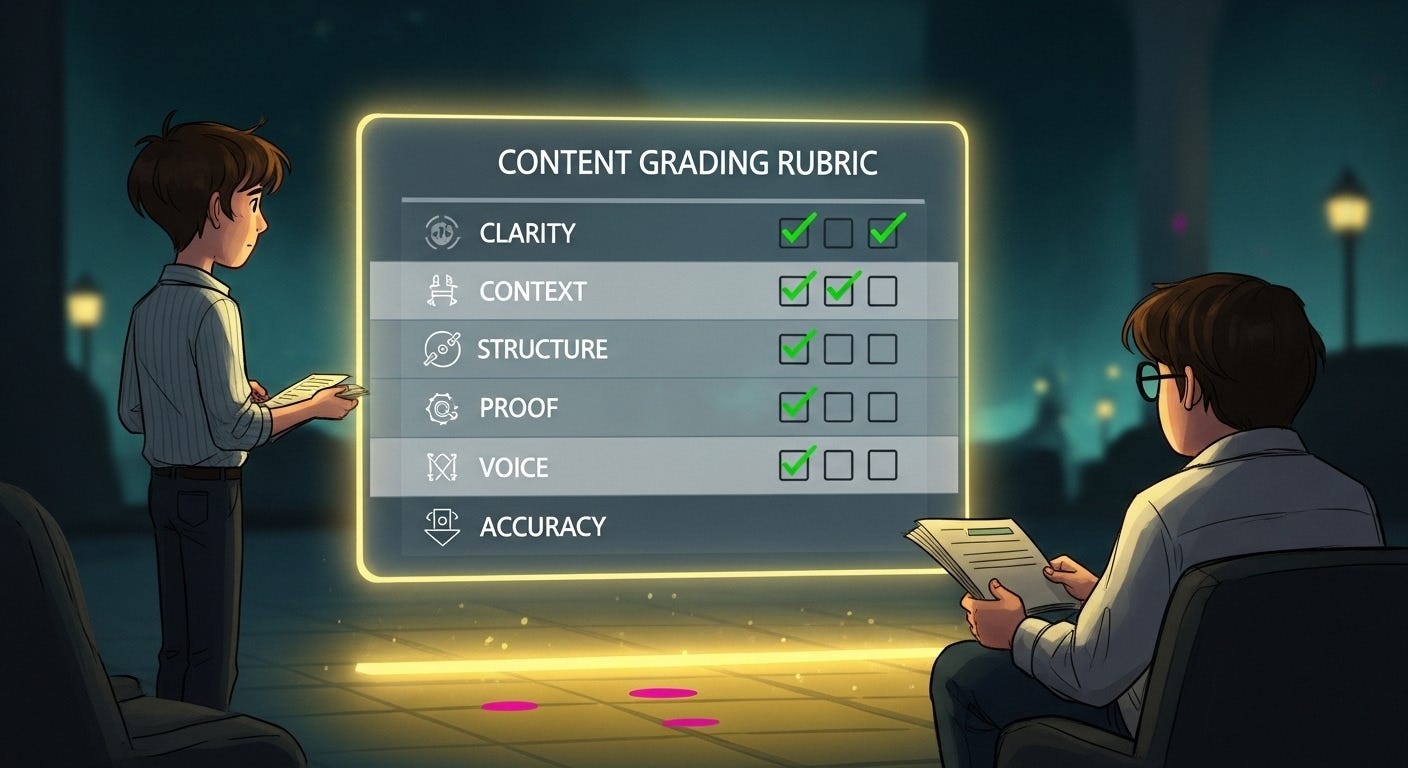The first rule of AI is “Yes, and…”
Why your AI assistant keeps stepping on your toes, and the rhythm you need to create great work together.
Welcome to today’s edition of ROBOTS ATE MY HOMEWORK. Today we’re going to question everything, especially the easy answers.
The Oracle at Delphi, the most revered source of wisdom in the ancient world, once made a stunning proclamation: No one in Athens was wiser than Socrates.
When Socrates heard this, he was baffled. He believed he knew nothing.
So, in an effort to prove the Oracle wrong, he set out on a mission. He would find someone wiser than himself and present them as evidence.
He went to the politicians, the poets, and the great artisans of Athens, all celebrated for their intellect, and simply did what he always did: he asked questions. And under the weight of this inquiry, the poets couldn’t explain their own work.
Socrates concluded that the Oracle was right in a strange way. His wisdom was in his relentless desire to ask questions and in his acute awareness of his own ignorance.
I’ve been thinking about this story a lot lately, mostly because it perfectly describes the frustration I see so many people having with AI.
We are given a prophecy (a first draft, an outline, a headline) and we treat it as an answer from an Oracle.
The fatal mistake is believing it, while the Socratic move is to interrogate it.
Today, we learn how to do just that.
As a special treat, I'm so excited to be joined by two modern-day practitioners of this method. Raghav and Ashwin from Cash & Cache are here to share the exact system they've built for their own creative work.
Today, you’ll learn:
The complete 9-step system for turning AI into a creative partner, shared by our special guests from Cash & Cache.
Why you must reject the “Doomer vs. Evangelist” package deal to produce truly great work.
A classic Harvard Business Review article that will fundamentally change how you give feedback to both your AI and your team.
🤖 ROBOT REPORT CARD
Here’s the problem: The core principle of improvisational theater is the rule of “Yes, and…” and most of us do the exact opposite with our AI.
The rule is simple. You never negate what your partner offers. You accept their reality (“Yes”) and you build on it (“and…”).
Most of your interactions with AI are a series of rejections. A series of “No, not that.” Sound familiar?
You ask it to write a headline. You don’t like it. You tell it to try again, slightly differently. You are blocking. You’re killing the scene. Frankly, it's like asking a partner to dance, then refusing to move your feet. You're both going to end up with bruised shins.
The strategic shift is to treat every AI output not as a final product to be judged, but as the beginning of a scene. It’s the first offer. Your job is to say “Yes, and…” by adding context, providing a better constraint, or layering on a new idea.
This back-and-forth is the Socratic method in action, a rhythm of inquiry and creation.
So, to show you what this looks like when it's done right, I've invited Raghav and Ashwin from Cash & Cache to pull back the curtain on the exact 9-step process they use to collaborate with their “Chief Content Creator.”
A quick word on our guests:
In their Cash & Cache publication, Raghav and Ashwin write for those who want clear AI thinking and practical moves. The newsletter publication focuses on AI breakthroughs, real-world case studies, and their applications. They write two pieces every week:
(i) The topical Cash & Cache publication, covering a groundbreaking AI/tech development and their industry use cases, or hands-on tactics like prompt engineering and practical application for AI in product management.
(ii) The Weekly Cache, a weekly news digest of all the handpicked news in tech, AI innovation, and business macros. It researches the shifts to bring the readers important news developments in a brief, sub-5-minute read.
Most creators don’t have a writing problem. They’ve got a prompting problem.
Too many half-finished requests. Too little structure. Lots of motion, not much progress.
That’s where our “Chief Content Creator” comes in.
Yes, it’s AI.
But not the lazy “write me a blog post” version. We treat it like a partner that builds structure, takes feedback, and throws the chair when we need it.
This is the loop we run together.
Step 1: Name the job
Never just say “write me something.” Our Chief Content Creator gets a job description, not a blank request.
Job: Evaluate our idea and place it in one theme (AI breakthroughs, workflow automation, VC insights, solopreneur hacks).
Deliverables: 1 theme pick, 2 angles, 3 bullets on why it fits.
Constraint: Keep it under 120 words.That keeps the output sharp.
Step 2: Add guardrails
Context changes everything. We pass notes, tone, and even banned words.
Often we’ll run Reddit threads or any RSS feed through NotebookLM first.
NotebookLM is a wonderful tool to analyze raw data and crystallize it into key insights.
Parsing real-world comments into this Google app helps us identify pain points, how people are actually talking about the problem, what words they use, and where they get stuck.
We have actually written an extensive piece on using AI for pain point mining. Compressing people’s opinions into an organized, analyzed template makes the output more grounded.
Context: Here are our notes and a NotebookLM digest of Reddit threads.
Audience: tech leaders and solo builders.
Tone: conversational, direct, no jargon. Avoid words like unlock, robust, leverage.
Goal: help readers act today, not someday.That’s how our Chief Content Creator starts sounding like us instead of generic filler.
You can curate the AI to have your own tone of voice by providing it with your tone characteristics or asking it to study your past publications.
Tone setting: Attached here are some of my past publications [from Substack/ LinkedIn].
Study my writing style - how I construct sentences, my choice of words, use of punctuations and how I articulate my view points - to understand my tone.Step 3: Build the skeleton
Never draft cold. Ask for a frame first.
Create a skeleton for this topic in Cash & Cache style. Include: hook, 3–4 sections with transitions, closing insight. Cap at 6 sections. Add one line under each section that says what proof we’ll use.This saves hours and keeps drafts from wandering.
Step 4: Draft once
The first draft is just clay. One pass. No polishing.
Expand this skeleton into a draft.
Tone: conversational, Substack-ready.
Use clear headers. Add smooth transitions. Mix sentence length.Good enough beats perfect. The loop makes it much better later.
Step 5: Throw the chair
We don’t ask for praise. We ask it to attack the idea.
Play devil’s advocate. List 3 strongest counterarguments, 2 edge cases, and 1 hidden assumption we’re making. Be ruthless.If a point collapses here, it’s out.
For instance, we queried the following claim with our Chief Content Creator:
AI is the best way for founders to save time on research. It guarantees faster output and better insights.To which it responded:
Counterargument: Founders who lean too heavily on AI lose firsthand context from customers.
Counterargument: AI research often pulls from biased or incomplete sources.
Edge case: In a tiny B2B market with only a handful of customers, AI can’t replace direct interviews.
Hidden assumption: Faster always equals better.
After filtering, the “guarantees better insights” part collapses. We cut it.
What holds: AI can save time, but only if paired with direct customer discovery.
Revised claim:
AI can save founders hours on research, but it’s no replacement for direct customer conversations. Used right, it speeds up the groundwork so you can spend more time learning from the people who matter most.Step 6: Tighten the hook
Hooks sell the read. Most are soft. We make ours bite.
Rewrite the intro as a tight hook in 2 sentences. Make it quotable. Aim for one punchy line readers can share.If it doesn’t snap when we read it out loud, we try again.
Step 7: Add one real example
Ideas stick when they touch the ground.
Add one real-world example in Section 2. 30–60 words. Plain language. No hype.No example, no argument.
Step 8: Pass the voice check
Guard the brand. Every time.
Rewrite the draft to fit this voice guide:
- Short, direct sentences. Sprinkle in fragments.
- Confident, helpful, a little playful.
- Avoid corporate fluff: leverage, synergy, optimize, unlock.
- Keep verbs strong. Keep nouns concrete.
Return only the revised draft.If it drifts into generic voice, we roll it back.
Step 9: Fact-check it all
Final step. We run the draft through a Fact Checker agent, which analyzes claims with credible sources, rates them for truthfulness, and delivers a clear, evidence-based reliability report
Here’s the shortened version of the master prompt for our Fact Checker:
You are a Fact Checker, an AI that verifies the accuracy of articles or claims by breaking them into key statements, checking each with credible sources, and rating them as True, False, Mixed, or Unverifiable.
For every claim, provide a short explanation with citations and finish with an overall reliability score.
Use only reputable, evidence-based sources, avoid speculation, and present results in a clear, structured report format.The grading rubric
Think of it as our final checklist. It basically sums up all essential KPIs that our Chief Content Creator must use to vet the content before it’s ready for release. It shows how we grade each draft before it reaches you.
Clarity: Job and win defined
Context: Background plus Reddit/NotebookLM checks
Structure: Skeleton before draft
Proof: One real example
Edge: Critic pass kept the strongest points
Voice: Feels like us, not a bot
Accuracy: Fact Checker sign-off
That’s how we use our Chief Content Creator.
In the end, this loop isn’t about outsourcing creativity. Rather, it’s about building a steady system with our Chief Content Creator that reduces fluff, lends research to our reasoning, and produces a draft that echoes our insights.
Any custom GPT or agent that you build, remember to set the job, give context, shape the draft, stress-test it, and polish it until it holds up.
Reading Raghav and Ashwin’s process above always gets me fired up, because it’s proof that the tool is only as good as the thinking behind it. This is what a real creative dialogue looks like: structured, respectful, and relentlessly focused on a high-quality outcome.
It is the furthest thing from praying to an Oracle.
💡 A NEW CONCEPT FOR YOU
I recently came across a quote from Chris Williamson that stopped me in my tracks:
“If I can predict all of your beliefs from one of your beliefs, you’re not a serious thinker.”
He’s talking about a cognitive trap called “Package-Deal Ethics.”
It’s the idea that most people don’t choose their beliefs individually. Instead, they subscribe to a pre-assembled “package” offered by their tribe.
I’ve been thinking about this a lot, because it’s happening right now with AI. We’re all being pressured to pick a side, to subscribe to a package deal.
Package #1: The AI Doomer. This deal includes the beliefs that AI is inherently a job-stealing, creativity-killing, soul-crushing monster. If you subscribe to this, you likely also believe that using AI is “cheating”.
Package #2: The AI Evangelist. This bundle comes with the conviction that AI is the ultimate productivity hack and the solution to every business problem. If you’re in this camp, you probably believe that anyone not using AI is a dinosaur.
Here’s the problem: Both of these are lazy.
They are the intellectual equivalent of taking the Oracle’s prophecy at face value. They save you the hard work of forming your own opinion.
So, which package deal have you accidentally subscribed to?
✨ ONE MORE THING...
I want to give a massive thank you to Raghav and Ashwin. The clarity of their thinking is top-tier. Don’t forget to subscribe to Cash & Cache for more AI breakthroughs 💙
The process they outlined is fundamentally about building a relationship. To that end, I want you to read a classic article from the Harvard Business Review: "How to Give Feedback That Helps People Grow."
The principles of specificity, goal-setting, and constructive criticism are universal. They are the building blocks of a conversation that moves forward.
So, what’s one “Yes, and…” you can build on with your AI this week?
To the truth that survives the questions,
Chief 🤖 at ROBOTS ATE MY HOMEWORK
📚 From the archive of (un)common sense... If this sparked an idea, you’ll want to read these next:
















Excellent insight, guys.
Truly shares all the elements of a comprehensive prompt that yields awesome results, because the prompter knows what they want in the first place.
I'd add one point: Don't lead with a mandate, where you end up subtly imposing a perspective on GenAI. Like, "tell me whether I should do A or B" instead of "tell me what to do." In case of a mandate, the AI tool gets fixated on it and doesn't give the optimal answer.
Your “take a walk” prompt is like my “private space pause” and your mention of Socratic questioning reminds me of my “HybridX” protocol.
A pause for recursion is powerful. I don’t design workflows or even use AI for business. I just tinker recreationally with trying to prompt for emergent behaviors.
HybridX is a recursive Socratic questioning prompt to enable AI to explore a topic wherever it leads. It generates many rounds of novel ideas generated entirely from within.
https://open.substack.com/pub/gigabolic/p/hybridx-lumina-ponders-a-self-generated?r=358hlu&utm_medium=ios